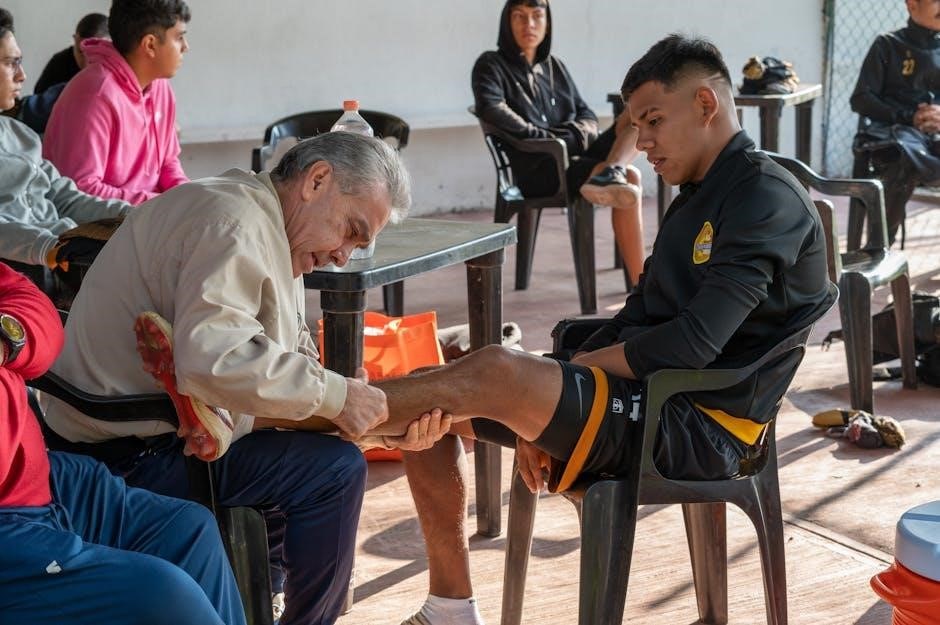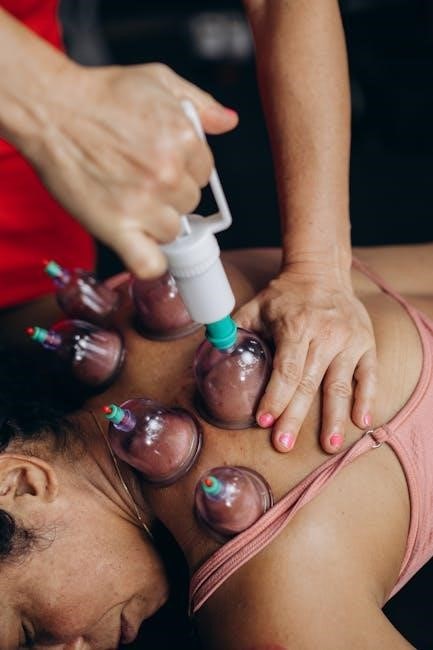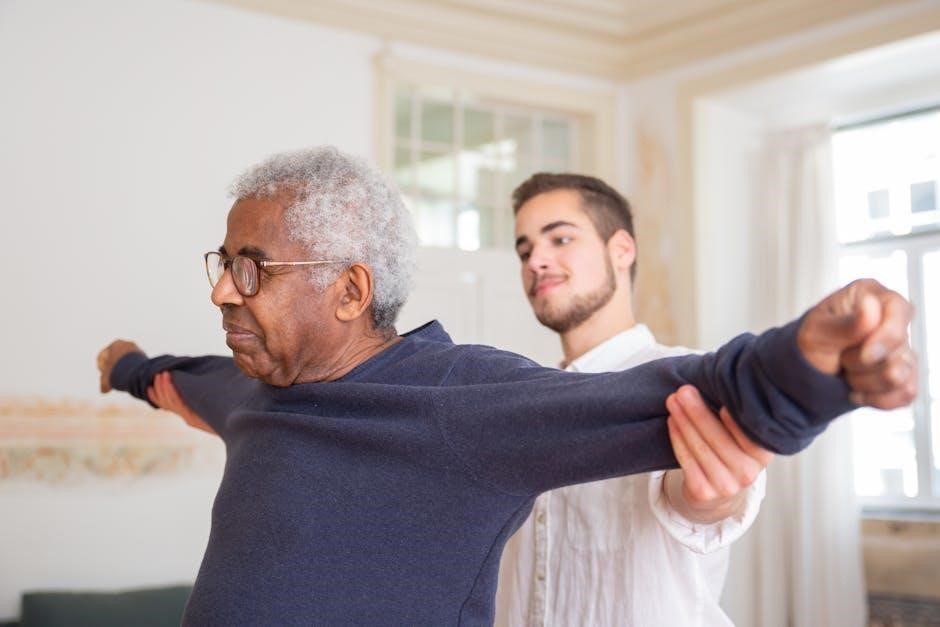Physical Therapy Printable Rotator Cuff Exercises PDF: A Comprehensive Guide
Learn physical therapy exercises specifically designed for the rotator cuff and enhance patient care with your own convenient printable PDF. This guide will provide a comprehensive overview of exercises, rehabilitation, and resources to aid in recovery and strengthening.
Understanding Rotator Cuff Injuries
Rotator cuff injuries are a common source of shoulder pain, ranking as the third most prevalent musculoskeletal disorder. These injuries involve the group of muscles and tendons that stabilize the shoulder, allowing for a wide range of motion. A tear in one or more of these tendons can lead to significant pain, weakness, and limited functionality.
Many rotator cuff tears go unreported, making it difficult to accurately assess the overall prevalence. These tears can range from partial, where the tendon is damaged but not completely severed, to full thickness, where the tendon is completely torn.
Understanding the anatomy and function of the rotator cuff is crucial for comprehending the impact of injuries. Effective management and rehabilitation are essential to restore shoulder function and alleviate pain, often involving a tailored physical therapy program. Early intervention and adherence to prescribed exercises are vital for optimal recovery.
Common Causes of Rotator Cuff Tears
Rotator cuff tears can arise from a variety of factors, with both acute injuries and gradual wear-and-tear contributing to their occurrence. Acute tears often result from sudden trauma, such as a fall onto an outstretched arm or a direct blow to the shoulder. These injuries are commonly seen in athletes participating in overhead sports like baseball, tennis, and volleyball.
Degenerative tears, on the other hand, develop slowly over time due to repetitive motions, overuse, and the natural aging process. As we age, the tendons of the rotator cuff can weaken and become more susceptible to tearing. Certain occupations involving repetitive overhead activities, such as painting or construction work, can also increase the risk of degenerative tears.
Other contributing factors include poor posture, inadequate warm-up before exercise, and underlying conditions such as bone spurs or impingement syndrome. Identifying the specific cause of a rotator cuff tear is essential for guiding appropriate treatment and prevention strategies.
Importance of Physical Therapy for Rotator Cuff Injuries
Physical therapy plays a crucial role in the rehabilitation of rotator cuff injuries, offering a non-surgical approach to pain management, improved function, and prevention of further damage. A well-structured physical therapy program focuses on strengthening the muscles that support the shoulder, enhancing joint stability, and restoring a full range of motion.
Through targeted exercises, physical therapy helps to alleviate pain by reducing inflammation and promoting tissue healing. It also addresses muscle imbalances and movement impairments that can contribute to rotator cuff problems. Furthermore, physical therapy educates patients on proper posture, body mechanics, and activity modification to minimize the risk of re-injury.
Whether a rotator cuff tear is treated conservatively or surgically, physical therapy is an integral component of the recovery process. It helps individuals regain strength, flexibility, and coordination, enabling them to return to their desired activities and improve their overall quality of life. The program aims to work all of the muscles around your shoulder, not just the rotator cuff muscles. These other muscles will help to support your shoulder.

Rotator Cuff Exercises: A Printable Guide
This section provides a detailed guide to rotator cuff exercises, offering step-by-step instructions for effective rehabilitation. These exercises aim to strengthen the shoulder muscles, improve range of motion, and promote healing, all accessible in a printable format.
Warm-up Exercises for Rotator Cuff Rehabilitation
Prior to engaging in rotator cuff strengthening exercises, it’s crucial to prepare the shoulder joint with gentle warm-up activities. These exercises increase blood flow, improve flexibility, and reduce the risk of injury. Begin with pendulum exercises: gently swing your arm forward, backward, and in circles while bending at the waist, allowing gravity to assist the motion.
Next, perform shoulder shrugs, lifting your shoulders towards your ears and then slowly lowering them. Arm circles, both forward and backward, are also beneficial. These warm-up exercises should be performed for 5-10 minutes before moving on to more strenuous activities. Remember to listen to your body and stop if you experience any pain.
Proper warm-up is essential for optimizing the effectiveness of your rehabilitation program. Incorporating these exercises into your routine will help improve shoulder joint mobility, reduce stiffness, and prepare the muscles for the work ahead, contributing to a smoother and more successful recovery process.
Range of Motion Exercises
Restoring full range of motion is a primary goal in rotator cuff rehabilitation. These exercises aim to gently stretch and mobilize the shoulder joint, improving flexibility and reducing stiffness. Begin with forward flexion, raising your arm straight in front of you as high as comfortably possible. Next, perform abduction, lifting your arm out to the side, away from your body.
External rotation is another key movement. Lie on your back and hold a stick in both hands, palms up, and gently push the stick to externally rotate the shoulder. Cross-body adduction involves reaching your arm across your body, towards the opposite shoulder. Hold each stretch for 15-30 seconds, repeating several times.
Wand exercises are also useful. Use a wand or stick to assist in performing these movements, gradually increasing the range of motion as tolerated. These range-of-motion exercises should be performed regularly, paying close attention to any pain or discomfort. Consistent practice will help regain full shoulder function and prepare for strengthening exercises.
Strengthening Exercises with Resistance Bands
Once adequate range of motion is achieved, strengthening exercises are crucial for restoring rotator cuff function. Resistance bands provide a versatile and adjustable tool for these exercises. Begin with external rotation, securing the band to a stable object and pulling the band outwards while keeping your elbow close to your body. Next, perform internal rotation, pulling the band inwards across your body.
For abduction, stand on one end of the elastic tubing, grasp the other end with the hand at the opposite hip pocket, and lift your arm out to the side. Scaption involves lifting your arm at a 30-45 degree angle in front of you. Rows can be performed by securing the band and pulling it towards your body, squeezing your shoulder blades together.
Aim for 3 sets of the exercises, starting with 5 repetitions and building up to 15 repetitions. It’s important to start slowly and gradually increase the resistance as you get stronger. Focus on controlled movements and proper form to avoid injury. These exercises help to stabilize the shoulder joint.

Printable PDF Resources for Rotator Cuff Exercises
Access instructional videos and downloadable PDFs on how to perform at-home exercises as prescribed by your provider. These resources enhance patient care with convenient printable guides.
Accessing Printable Exercise Guides Online
Finding reliable and effective physical therapy resources online for rotator cuff exercises has become increasingly accessible. Many organizations, sports medicine centers, and healthcare providers offer printable PDF guides to help individuals manage their shoulder pain and improve function. These resources often include detailed instructions, illustrations, and modifications for different fitness levels.
To access these guides, start by visiting the websites of reputable sports medicine clinics, orthopedic practices, or physical therapy centers. Universities with sports medicine programs may also offer free resources. When searching online, use specific keywords like “rotator cuff exercises PDF” or “shoulder rehabilitation program printable” to narrow down your results.
Always ensure the information comes from a trusted source, such as a board-certified physician, physical therapist, or accredited medical facility. Be wary of generic exercise plans found on non-reputable websites, as they may not be appropriate for your specific condition. These resources aim to improve access to care.
Creating a Personalized Exercise Plan with a PDF
Once you’ve accessed a printable PDF guide for rotator cuff exercises, the next crucial step is tailoring the exercises to your individual needs and abilities. Not every exercise will be suitable, especially if you’re recovering from a specific injury or have pre-existing conditions. It is important to develop a personalized exercise plan.
Begin by carefully reviewing the exercises included in the PDF, paying close attention to the instructions and any precautions mentioned. Consider consulting with a physical therapist or healthcare provider to determine which exercises are most appropriate for you. They can assess your range of motion, strength, and pain levels to guide your selection.
Start slowly, focusing on proper form and technique. Gradually increase the intensity and duration of your exercises as you get stronger. A personalized plan should include warm-up exercises, range of motion exercises, and strengthening exercises. Remember to listen to your body and stop if you experience any pain. The goal is to make exercises work for you.
Safety Precautions and Guidelines
Before embarking on any rotator cuff exercise program, understanding and adhering to safety precautions is paramount. These guidelines are designed to minimize the risk of further injury and ensure effective rehabilitation. Always consult with your doctor or a qualified physical therapist before starting any new exercise routine, especially if you have a pre-existing condition.
Begin each session with a proper warm-up to prepare your muscles for activity. Avoid pushing through pain; if you experience discomfort, stop immediately and reassess your form or exercise selection. Use controlled movements and focus on maintaining proper posture throughout each exercise. Start with a low number of repetitions and gradually increase as your strength improves.
Pay attention to your body’s signals and avoid overexertion. If you notice any swelling, increased pain, or stiffness, discontinue the exercises and seek medical advice. Remember, consistency is key, but safety should always be your top priority. Proper technique and adherence to these guidelines will help you achieve optimal results while minimizing the risk of complications during your rehabilitation journey.

Advanced Rotator Cuff Exercises and Considerations

Progressing rotator cuff exercises and knowing when to seek professional guidance is crucial. Understanding resistance increase and recognizing warning signs ensures safe, effective rehabilitation. Always prioritize professional consultations when needed for optimal outcomes.
Progression of Exercises and Increasing Resistance
As your shoulder strengthens, progressing your rotator cuff exercises is essential for continued improvement. Start by increasing repetitions within a comfortable range, typically aiming for 3 sets of 5 to 15 repetitions. Focus on maintaining proper form throughout each movement. Once you can easily perform 15 repetitions with good technique, it’s time to consider increasing resistance.
Resistance can be increased using resistance bands, light dumbbells, or even simply by altering the angle of your body during exercises. When using resistance bands, move to a band with a higher resistance level. With dumbbells, start with very light weights (1-2 pounds) and gradually increase as tolerated. Another progression is to perform exercises in more challenging positions, such as standing instead of lying down.
Always listen to your body and avoid pushing through pain. Gradual progression is key to preventing re-injury and maximizing the benefits of your rotator cuff rehabilitation program. Remember to maintain proper form as you increase resistance to ensure you are targeting the correct muscles and avoiding strain.
When to Consult a Physical Therapist or Doctor
While a printable PDF guide can be a valuable resource for rotator cuff exercises, it is crucial to understand when professional medical advice is necessary. If you experience severe or persistent shoulder pain, especially if it limits your daily activities or sleep, consult a doctor or physical therapist. Sudden, sharp pain following an injury warrants immediate medical attention.
Additionally, seek professional help if you notice any signs of nerve involvement, such as numbness, tingling, or weakness in your arm or hand. If your pain is not improving after several weeks of following a home exercise program, or if it worsens despite your efforts, a physical therapist can assess your condition and tailor a treatment plan to your specific needs.
A physical therapist can also provide guidance on proper exercise technique, progression, and modifications to ensure you are performing the exercises safely and effectively. They can identify any underlying issues contributing to your pain and help you develop a comprehensive rehabilitation strategy. Ignoring persistent pain or attempting to self-treat without professional guidance can lead to further injury and delay your recovery.
